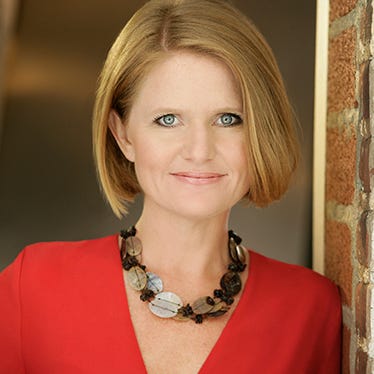How remote work rehabilitated a ‘controlling boss'
Pitch Publicity founder Amy Summers explains how her philosophy of managing employees has evolved thanks to remote work.

Hello, my name is Amy Summers. I’m a boss, and I’m a control freak.
I would have never admitted this a decade ago but working remotely for the past 13 years has forced my rehabilitation from “controlling boss” to “highly productive boss.” I now trust my team at a level in which I don’t need to require a meeting at the beginning and end of each day. In fact, we only have team meetings once a month, and surprisingly, it’s enough.
Why I went remote
The Covid-19 pandemic didn’t make me do it. Rather it was the Global Financial Crisis of 2007-2008 that then sparked the Great Recession that caused me to go from a physical office to a virtual space. I had allowed the cost of my office overhead to take priority over the livelihoods of my team members. Pitch Publicity had gone from thirteen to three clients by the end of 2009, due to the financial crisis, and I gut-wrenchingly was laying someone off every other month until it was just down to me in my home office where I had started my company originally. I made a vow to myself that year that when things picked up and I started hiring, I would never put myself in a position where it was more important to pay an office mortgage than someone’s paycheck.
Going remote was not a popular concept in 2010, but I was determined to make it work. While there have been many learning curves to get my remote business model to where it is today, one of the biggest revelations I had was how much of a “control freak” boss I was and how going remote would forever change my management style.
Looking back on the past decade of running a business remotely, there are clear advantages, including more profitability, diversity, flexibility and production. At this point, and after 20 years in business, I would never take Pitch Publicity back to a building, no matter how profitable the business becomes. And while this 100% remote business model will not work for all businesses, it can work for many that need to become more productive and efficient. I believe some obstacles in making the remote model work are centered on trust and community. However, there are ways to remedy this, and I’ll share some strategies that have worked for me.
Creating online community
When I first took my company remote, we didn’t have platforms like Slack or Microsoft Teams, so email, phone and text were the primary ways I connected with team members. While efficient, and controllable for me as the boss, these forms of communication kept each team member in their own “box.” What I’ve discovered is online communities are important to cultivate, especially if you are not physically seeing your team members each day. Virtual conferencing is not the way to solve this problem, as it slows productivity and basically just replaces that in-person—and probably unnecessary—meeting.
When I first heard about Slack, I was resistant to incorporating it into my remote work life. The idea of all the team members interacting more frequently with me, and each other, seemed like it would slow production and cause chaos. Slack actually has the opposite effect. It has made us more productive, organized our days, and most importantly, given my team members a sense of community. It also allows them to see the bigger picture of our campaigns when they can learn what everyone else is working on, and how their work fits into the overall strategy.
My “boss brain” was dismissing Slack for another reason as well. It just seemed silly with all the emojis and endless personalization. What a waste of time. But in reality, it helps encourage productivity and creativity. Thinking back to my childhood, I was one of those fortunate children whose parents allowed me to decorate my bedroom, however I liked. I had pink carpeting, stickers on my door, a TV and phone in my room and posters of Michael J. Fox and Kirk Cameron on the wall. My parents allowed me to be as creative as I wanted to be, and this gave me inspiration and identity as a preteen.
Your employees should be allowed that same creative freedom. A remote workspace they can customize is simpler to accomplish in a virtual space versus a physical cubical. As far as the emojis go, use them generously and add in some GIFs too. With each emoji or GIF celebrating an accomplishment or vocalizing an encouragement, you are pushing an adrenaline rush through your team that will drive them to deliver more, perhaps just to see how the boss reacts with another emoji! With instant feedback and encouragement from something as simple as clicking an emoji response, you can ditch those quarterly or annual reviews. This will save time, stress and get your team moving in the right direction daily, instead of quarterly.
Adding more structure and rewards
One of the major differences I’ve noticed from managing people in a physical office versus a virtual space is you must have more structure, clear goals, and be prepared to reward them often. When someone is working virtual, we are asking a lot of them. We are asking them to be self-motivated, make their own schedule and accomplish a wide range of goals, all with zero physical oversight. A lot can go wrong.
I struggled with this when I first took my company virtual, until I added more structure. Now, everyone in my company is given a two-week project, with clear objectives, tasks and goals. If they meet their goals by the end of the two weeks, they are rewarded with additional compensation. Then they are given another two-week project and the cycle starts again.
The feedback I receive on this method is always positive. I have found most people like structure and they like accomplishing something. They also like bonus money. So, if you can merge all these things together to meet your company’s goals, it will increase productivity.
Mandatory in-person immersions
Human beings are wired to be in relationships and need interaction with others to succeed in life. It doesn’t matter if you are an introvert or an extrovert. Being around your team, in person, is necessary to build camaraderie and loyalty and develop soft skills that only come from interacting with others. Therefore, you must allocate time for personal connections even if you have gone 100% virtual with your company.
Since I’m not spending money on brick and mortar, when I bring my team together, we do it up in a big way! Whether it’s a few days in New York City, or accompanying me to a conference, I fill every minute I can with opportunities to connect, network and to see the work we do in practice.
Making time for in-person interaction is not just important for your company, but also any boards you serve on with trade associations or nonprofits. If you don’t build in time for people to develop relationships with each other, they won’t stick with you for very long. In-person immersions are a necessary retention-building tool.
Publicize culture for recruitment
There are a lot of advantages to going virtual with your business, but there are also downsides. It’s like when dating apps first came on the scene. Prior to the internet, you dated people who lived in your proximity or city. How would you even know about people from other states or countries, unless you happened to run into someone while traveling? Dating apps opened the floodgates to the number of people you could meet and date at any given time.
Going virtual with your business is similar. By going virtual, I can hire any talent from anywhere in the country. However, the flip side to this is everyone else has more employment options too. This has made it more difficult for me to recruit, because almost every competitor of mine is now offering some form of remote employment.
What I’ve found to be helpful with recruitment is to publicize the benefits of working at my company. I accomplish this through making my team members the stars of Pitch Publicity and promoting our work culture through them. One of the most impactful things I’ve done is create a video about our internship mentorship program. A well-produced video can showcase your work culture and highlight the benefits of working at your company.
I also use our Pitch Publicity Instagram page as a tribute to our current and past team members (or as I like to call them “Pitch Stars”). I don’t share any client-related posts on this platform as the Instagram page is considered their space. I also make a point to ask any team member who is leaving Pitch Publicity to write a recommendation about their experience on my LinkedIn profile. This is powerful, because in their own words, they can share what it was really like to work for me and my company. These social media posts can be helpful when recruiting new talent.
Most employees want remote
When I took my company remote in 2010, the concept was not a popular one. However, thanks to the Covid-19 pandemic, it is now cool to work remotely, and more people want to do it.
Before the pandemic, in 2019, about 4% of employed people in the U.S. worked exclusively from home; by May 2020, that figure rose to 43%, according to Gallup. However, Gallup found a starker shift among white-collar workers. Before Covid-19, just 6% worked exclusively from home, and by May 2020 that figure rose to 65%. In addition, Pew researchers found nearly 60% of workers with jobs that can be done from home say they’d like to work from home all or most of the time, even post-pandemic, if given the choice.
How will you keep in step with the ever-changing landscape of recruiting top-notch talent for your business? Don’t be one of those “control freak” bosses that could never let go of the cubicle-filled office and 9 a.m. meetings. We will be reading about your demise 100 years from now. As a boss, I have found the biggest obstacle to going remote is just getting over yourself. Manage to do that, and watch your company launch into the next stratosphere.
Hello, my name is Amy Summers. I’m a boss, and I trust my team to get me there.
Amy Summers launched Pitch Publicity in 2003 in the face of a rapidly changing climate for communication and media relations. She has decades of experience working with major clients in the natural products industry to increase visibility and exposure to targeted audiences through national publicity exposure across all mass media outlets, high-level fundraising campaigns and developing key strategic communication strategies. Amy currently serves as board member and founding partner of Naturally New York.
About the Author
You May Also Like

